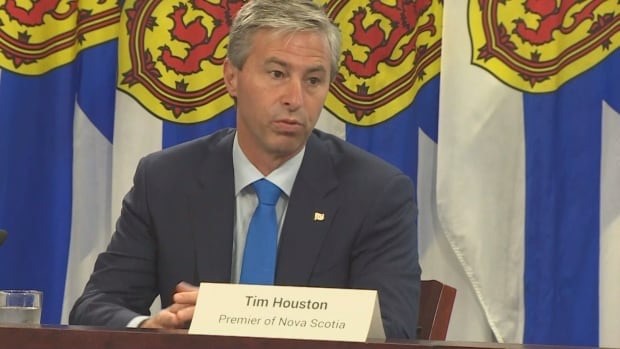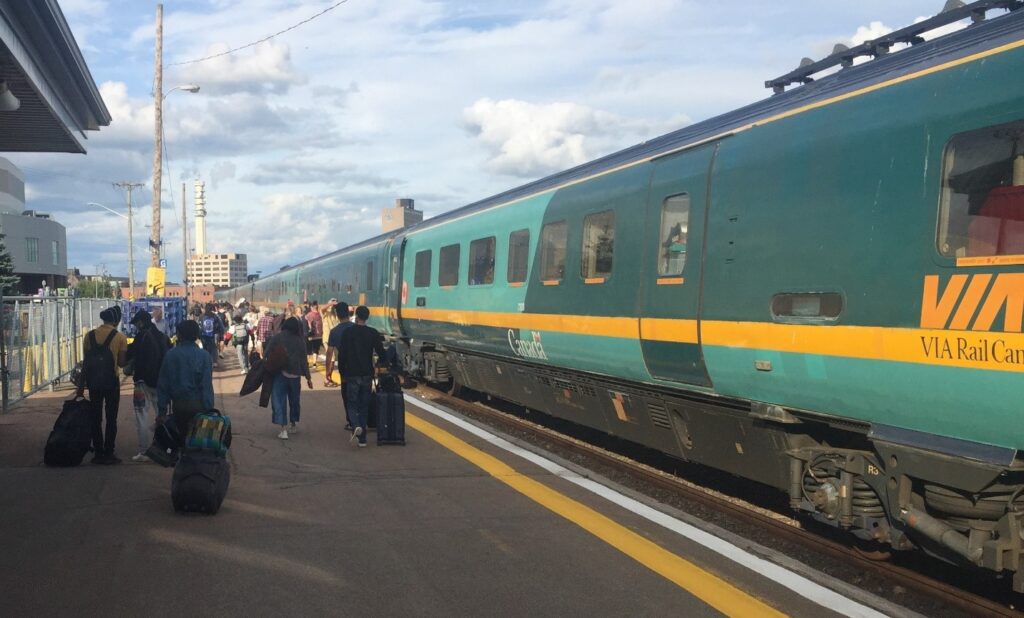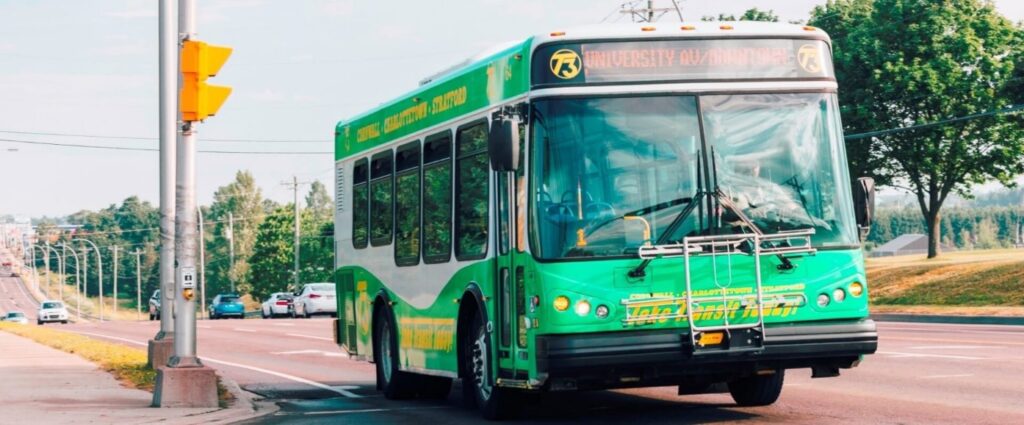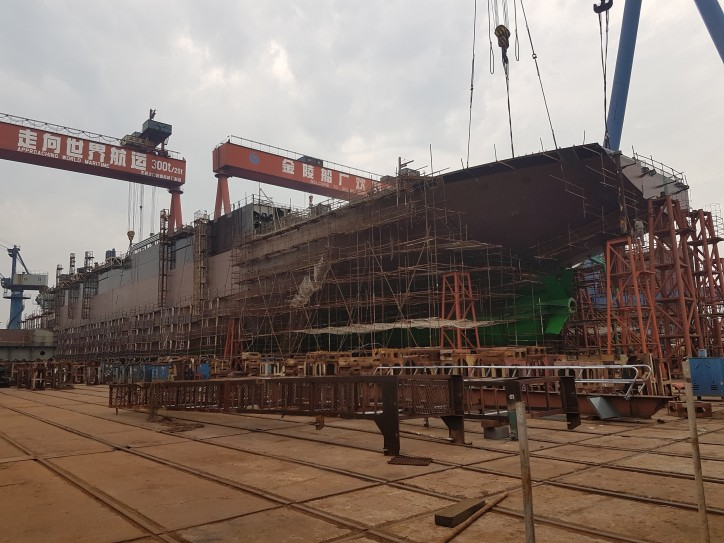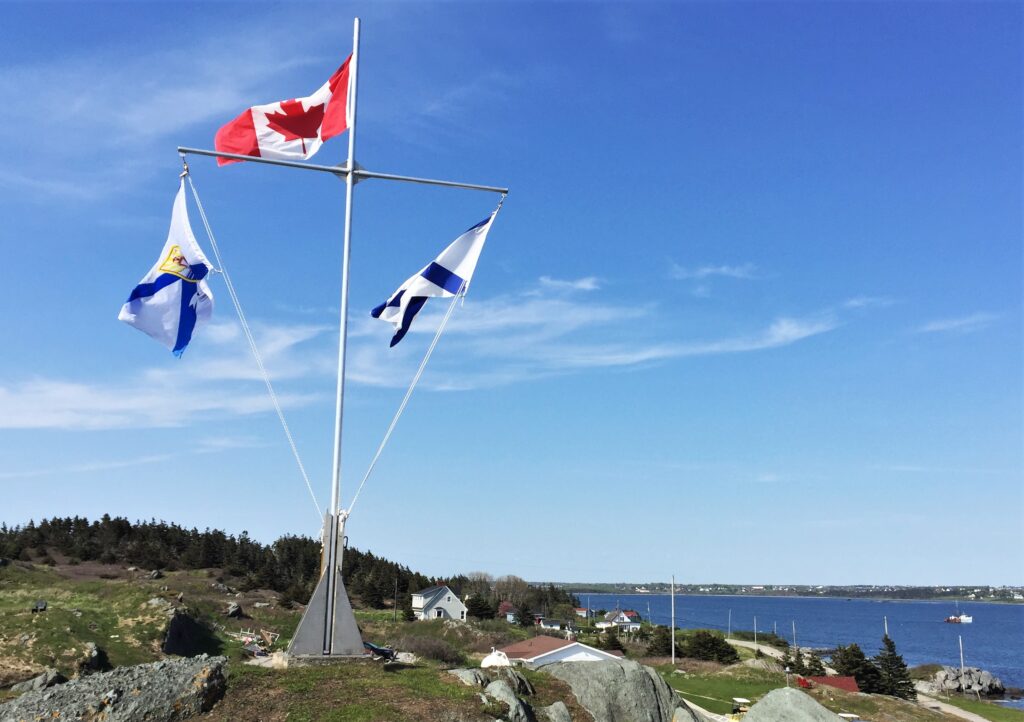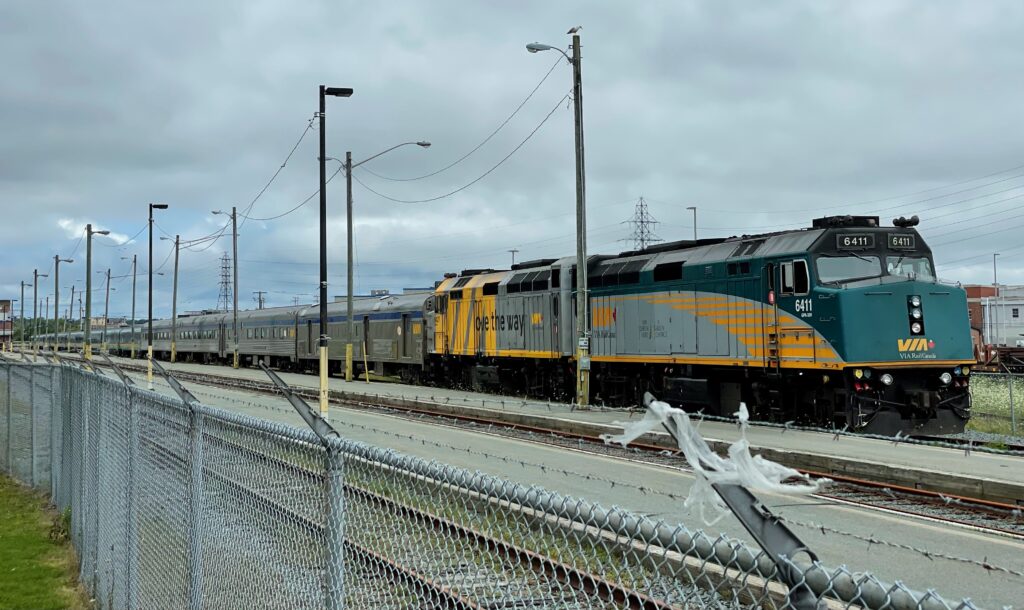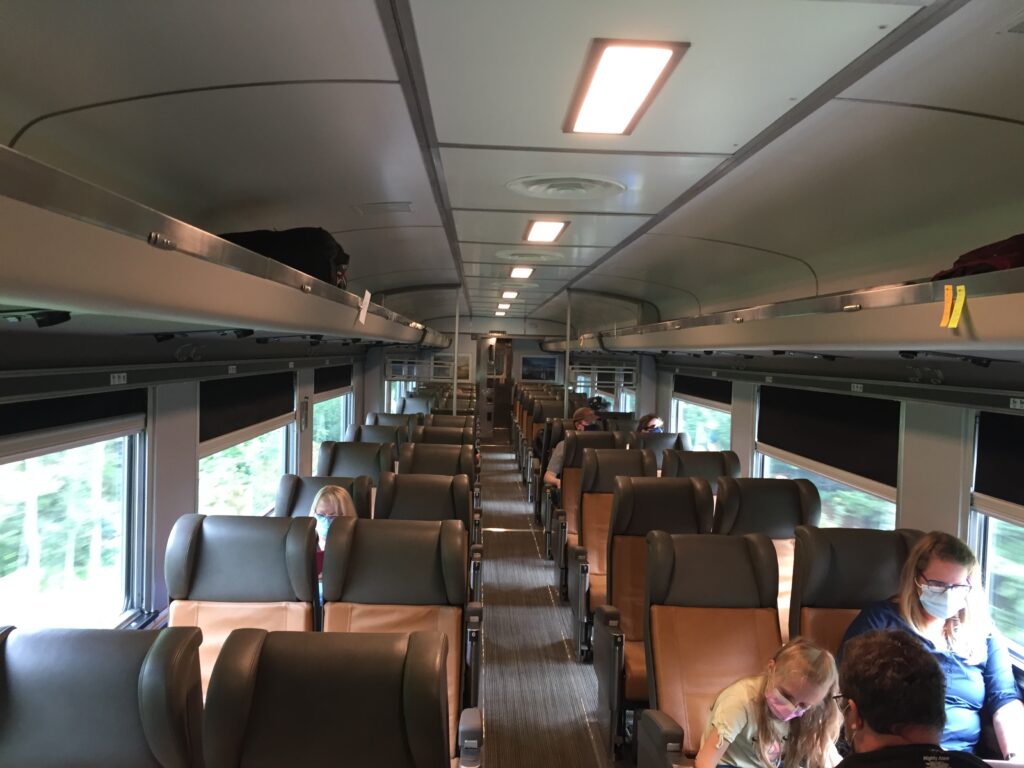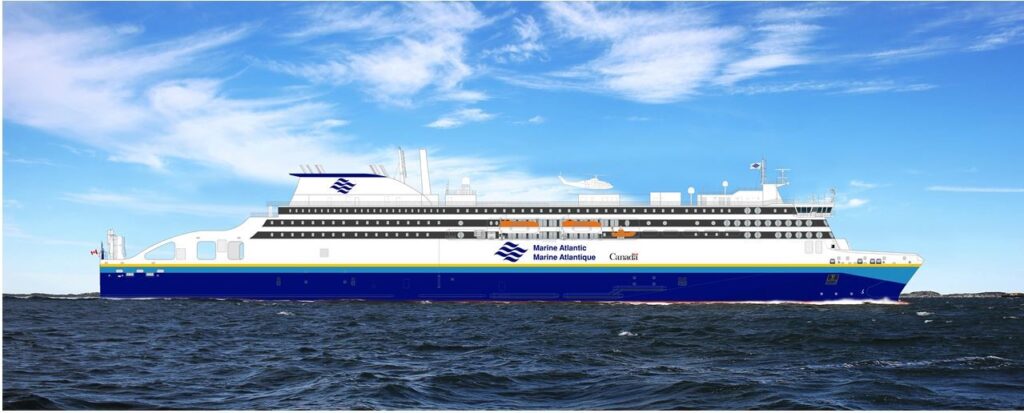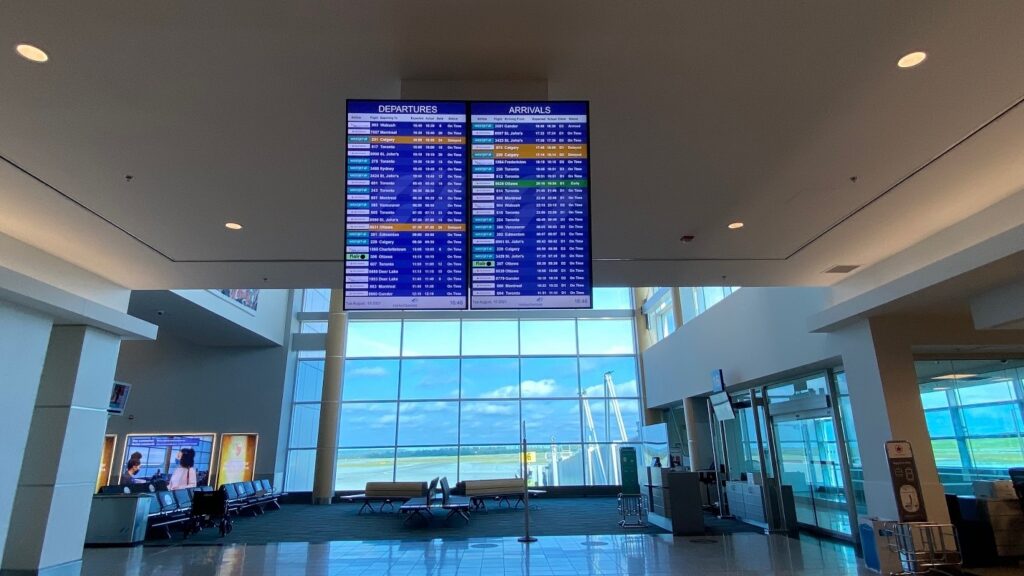Welcome to the December edition of Atlantic Transport News!
Here’s a look at what you’ll find in this edition:
- Atmospheric river severs TCH in western Newfoundland
- A mother’s testimony for PEI’s toonie transit
- Second Ocean frequency starts in time for holiday season travel
- Moving forward together: Halifax implements largest number of route changes yet
- Metrobus to launch “Zip Network” in January
- Campobello ferry slated to lose funding at year end
- Maritime Bus enters year 10, setting a new record for public transit on provincial highways
- Happy holidays! Year end donation reminder
ATMOSPHERIC RIVER SEVERS TCH IN WESTERN NEWFOUNDLAND

A record-breaking downpour that struck Cape Breton Island and southwestern Newfoundland in late November caused a major supply chain disruption, with multiple washouts completely closing the main highway north of the ferry terminal town of Port aux Basques. The province’s principal entry point for commercial traffic was totally isolated for over a week. While provincial highway crews scrambled to make emergency repairs to the Trans-Canada Highway, Marine Atlantic reactivated its closed-down seasonal Argentia terminal on short notice to accommodate high priority traffic.
Port aux Basques received a typical month’s worth of rain – about 165 millimetres – in just two days, according to Environment Canada. Then another 50 mm fell on the area less than a week later, prompting Mayor Brian Button to call for serious conversations on the impact of climate change on his town and others. The meteorological term “atmospheric river” is one we’ve not heard very often in the past – but it’s one that we’re likely to hear much more often in years to come. It refers to a narrow corridor of concentrated moisture, of the kind that impacted both of Canada’s coasts last month. While the devastation in the Atlantic provinces wasn’t nearly as spectacular as that in British Columbia, it still created widespread concern and disruption. There were no fatalities, but motorists in both Cape Breton and Newfoundland had some very scary experiences. One Parks Canada employee in Cape Breton Highlands had an exceptionally narrow escape when his truck plunged into a washed-out chasm.
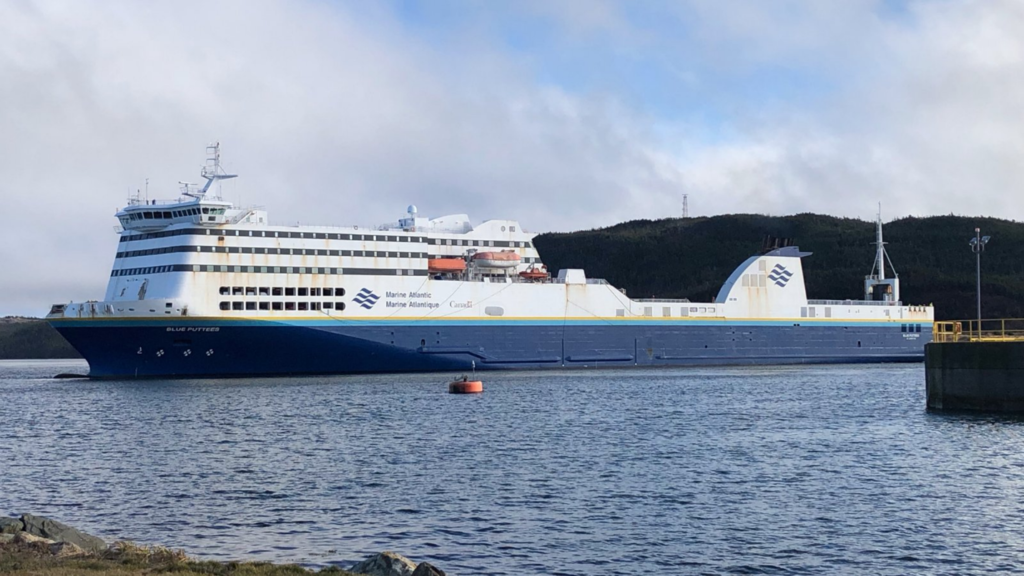
On request from the provincial government, Marine Atlantic acted quickly to deliver a temporary partial solution to the island’s critical supply situation. There was no point in transporting the hundreds of backlogged commercial vehicles from North Sydney to Port aux Basques – there was nowhere for them to go – so the shuttered seasonal terminal at Argentia was hastily reactivated. The two year-round workhorses, MV Blue Puttees and MV Highlanders aren’t well-suited to the alternate route, because there’s no access to their upper deck at the seasonal terminal and these two ships don’t have internal ramp or elevator capability as their normal mode is bi-level loading.
But despite the capacity limitations and the longer crossing time, the strategy worked. Supplemented by MV Leif Ericson, a combined total of five round trips were made over a six-day period. The three ships transported a total of 606 commercial units and 1120 passengers with their vehicles to and from Argentia, according to spokesperson Darrell Mercer.
During the emergency, passengers and vehicles going to and from Argentia were charged the lower Port aux Basques fare – no doubt a welcome surprise to many. There were no food services available in the area of the Argentia terminal for the diverted truckers, but they were pleasantly surprised when the local population, some businesses, and service organizations came to the rescue. In a scenario reminiscent of the famous Come from Away story, they delivered meals or food packages to the drivers waiting in line.
By December 2 the TCH was once again passable, and the Argentia diversion came to an end. But the success of the operation prompted Placentia Mayor Keith Pearson to suggest in a CBC interview that the longer ferry route directly to the province’s largest concentration of population could play a larger role on more than just on a seasonal basis. An online petition calling for a year-round Argentia run had gathered over 2600 signatures by December 10.
-Ted Bartlett
“WHERE YOU LIVE DOESN’T SET LIMITATIONS ANYMORE” – A MOTHER’S TESTIMONIAL FOR PEI’S TOONIE TRANSIT
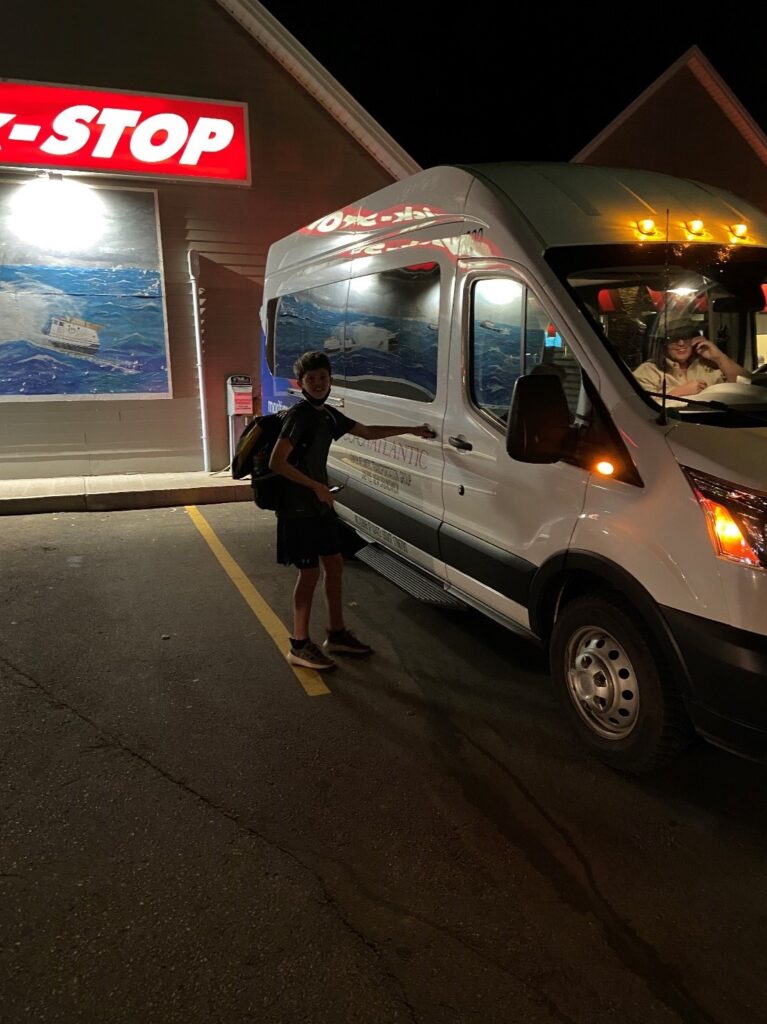
Thirteen year old Brady Chaisson is an aspiring young hockey player who lives in Souris, PEI. Some 80 kilometres away on the outskirts of Charlottetown there’s a recognized Hockey Canada school, the Mount Academy. It represented a golden opportunity for both his academic and sporting future, and his parents were giving serious consideration to enrolling him there. But there was one big catch: more than four hours on the road each day to drive him to and from – a daunting obstacle.
Then in early October came the game changer for Brady and his family. The provincial government announced a new transit program that would level the playing field – or rather the ice rink – for rural Islanders. Dubbed “Toonie Transit” because of the $2 one-way fare, regardless of distance, the publicly-funded initiative made the decision easy. It costs $20 a week for him to get to the Charlottetown campus – and he’s home every evening in time for supper.
“I was in shock; I couldn’t believe this was happening,” recalls Brady’s mom, Julie. Toonie transit was set to start on what would be his first day at the new school, and the schedule was a perfect match for school hours. Furthermore, the bus is flexible enough to make an extra stop to drop him off and pick him up right at the school to avoid any need to transfer to city transit, and of course the bus drivers know him by name.
Understandably, Julie is a cheerleader for rural transit, and is effusive in her praise for Premier Dennis King and service operator Mike Cassidy. “This is fantastic for PEI,” she says. “Where you live doesn’t set limitations anymore.”
Toonie transit now extends from Souris and Georgetown in the eastern part of the province all the way to Summerside. The previously-existing service between Charlottetown and Summerside via Kensington and Hunter River has come under the new umbrella, with fares being reduced to but a fraction of their former levels. The next step is to extend the service west to Alberton and Tignish in early 2022.
-Ted Bartlett
SECOND OCEAN FREQUENCY STARTS IN TIME FOR HOLIDAY SEASON TRAVEL

Though it’s still a long way from what we’d like to see, train travel in the Maritimes has become just a little bit easier in time for the Christmas holidays. On December 8, 2021, a second Ocean train set departed Montreal for the first time since March of 2020, meaning there was both a westbound train and an eastbound train on the road at the same time, meeting in the wee hours of the morning as they continued on to their respective destinations. The Ocean is now up to twice a week service, a full doubling of the meager once a week frequency that the train returned with after its lengthy pandemic shutdown, with trains departing from both Halifax and Montreal on Sundays and Wednesdays. When the service expansion was announced, VIA was clear that the timing was meant to coincide with the busier holiday season, and allow VIA to capture more ridership during this time period. President and CEO Cynthia Garneau was quoted in the press release as saying that “The return of this second frequency of the Ocean is good news for our passengers who now have more travel options in time for the holiday season”. As welcome as it is, it’s still only a shadow of VIA’s offering just a few years ago, when the tri-weekly service was further augmented with extra trains over the holidays.
The Sunday/Wednesday days of operation do work well around both Christmas and New Years, which fall on Saturdays this year, and the trains are selling well. Trains in both directions on Dec. 19 and 22, the two departures immediately before Christmas, have been sold out in most or all sleeper accommodations for some time. Other trains through that period also have limited availability. VIA’s reservations system appears to have shown additional sleeper inventory added more than once, which has disappeared quickly each time. We won’t be able to get a full sense of the total ridership until we see how much the train consists expand through this period, but it is already clear that there is still demand for this train, even after its lengthy absence.
Notably, the expansion to twice a week service now requires the use of two trainsets, which will be all that is required for the tri-weekly service return (and could even, in theory, support 4 trains a week). There have been concerns about VIA’s equipment availability to equip the Ocean, and while the longer term prospect is still concerning, it is positive to see enough equipment on hand to equip two trains with matching consists, and hopefully to expand suitably through the busier season.
In a boost to riders in the Gaspé, still waiting on an eventual return of their own train service, La Régie intermunicipale de transport de la Gaspésie – Îles-de-la-Madeleine (RÉGÎM) is once again bringing back its bus shuttle service to connect to and from the Ocean at Campbellton, allowing passengers to connect from stations along the former Chaleur route. This shuttle service has featured during past summer and holiday periods, and has continued to keep some connection to the Gaspé alive – no doubt a useful plan to keep enthusiasm for an eventual return of VIA to the region. The shuttle will connect with trains from Dec. 16 to Jan. 5.
A return to tri-weekly Ocean service is still planned for June 2022, at roughly the same time as the remainder of VIA’s network will finally see a return to normalcy, though the exact date is unlikely to be confirmed until much closer to that time.
-Tim Hayman
MOVING FORWARD TOGETHER: HALIFAX IMPLEMENTS LARGEST NUMBER OF ROUTE CHANGES YET
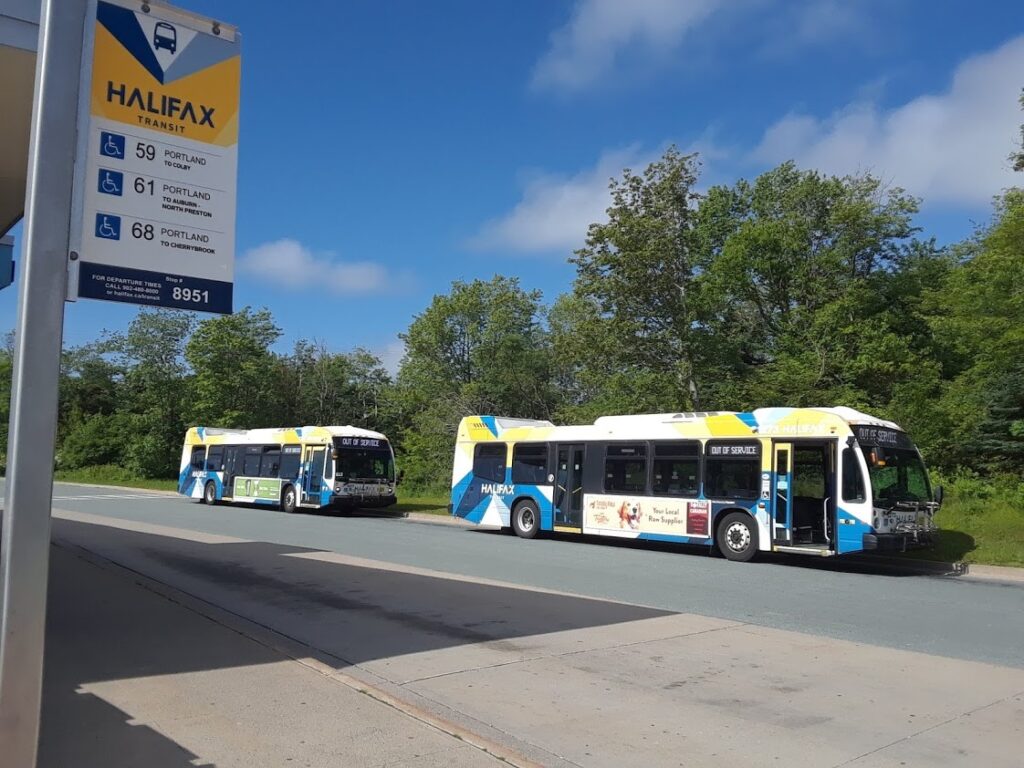
SUBMITTED PHOTO
On November 22, 2021, Halifax Transit introduced large-scale service changes primarily affecting communities on the Dartmouth side, but also reaching to Halifax, Spryfield and Porters Lake/Seaforth. A new West Bedford Park & Ride has also opened, which has required minor modifications to four routes.
These changes are not part of the longer-term BRT and fast-ferry Rapid Transit plan. Most are part of a rolling program stemming from 2016 when Halifax Regional Council approved the Moving Forward Together Plan (MFTP) – Halifax Transit’s strategic route network redesign. The recent changes are outlined in the Annual Service Plan, approved by Regional Council in May 2021.
Based on the MFTP, the network consists of eight service types. To help people easily identify each route’s service type, every type is being assigned its own range of route numbers, from which the service day and minimum frequencies can be inferred for any route:
• Corridor Routes (Routes 1 – 9)
• Local Routes (Routes 20 – 99)
• Express Routes (Routes 100 through 199)
• Regional Express Routes (Route 300 – 399)
• Rural Routes (Routes 400 – 499)
• Ferry Routes (Routes 500- 599)
• School Routes (Routes 700-799)
• Access-A-Bus
Some routes have a letter attached, to indicate branched or directional routing differences. Branched routes operate along a main “trunk” providing high frequency service, and then splitting into “branches” to service different local areas at a lower frequency of service. Directional routes provide service in a particular direction of travel, indicated by the letter.
Of the various service types, the Corridor Routes, Express Routes, and Regional Express Routes are of particular interest to readers of Transport Action Atlantic’s Bulletin.
Corridor Routes aim to provide consistent, frequent, service on high demand corridors, connecting residential areas or retail districts with regional destinations like shopping, employment, schools, and services. These routes have sustained demand for transit over the course of the day, late into the evenings, and on weekends. They are well positioned to support increased residential density along the corridors which will, in turn, support increases in potential ridership generated by adjacent land uses.
Express Routes are a hybrid of the former successful MetroLink and Urban Express services. They are designed to provide commuters with a high quality, limited stop, weekday service during peak periods, making transit more attractive to individuals commuting for work and education. The intent is to attract peak period commuters to transit and reduce dependence on costly Park & Ride facilities. Express service picks up more passengers near their homes so they no longer need cars to access transit. It also retains a high level of service at terminals, allowing commuters who continue to use Park & Ride to retain a similar, if not better, level of service. Like the former Urban Express Routes, the new Express Routes provide local service in residential areas (regular local stops for pickups and drop offs). In some cases Express Routes replicate and replace Local Routes during peak times. Once an Express Route departs the local area, similar to MetroLink service but with no fare supplement, it provides limited stop service into downtown. Express Routes may also serve one or two major destinations on the way. Upon arrival in Downtown Halifax more frequent stops resume, allowing users to access their destinations quickly and easily.
Regional Express Routes connect rural, outlying communities to the urban core and other transit services. The intent is to allow residents of outlying communities the option of using transit for regular commuting. Regional Express Routes are subject to a premium fare. The Regional Express service model is very similar to the MetroX service which it supersedes; however, the new format will potentially allow one to three additional stops within the Urban Transit Service Boundary.
Compiled and adapted from Halifax Transit website content. Further details are available at https://www.halifax.ca/transportation/halifax-transit/service-adjustments
METROBUS TO LAUNCH “ZIP NETWORK” IN JANUARY

Significant improvements to public transit in St. John’s are coming early in the new year. City Hall announced on December 7 that funding has been allocated for the launch of “Zip Network”, which will increase frequency on multiple Metrobus routes starting on January 3.
The service upgrades are part of a commitment by City Council to implement more frequent bus service. The budget for this improvement was originally approved in 2019, but implementation was put on hold due to pandemic restrictions.
“We are pleased to offer this improved service to Metrobus riders,” said Councillor Ian Froude, member of the St. John’s Transportation Commission. “Council is committed to public transportation, and more frequent bus service on the core routes is something we know users are anxious to see implemented.”
TheZip Network will offer increased and consistent frequency throughout the day on routes 1, 2, 3 and 10, offering service earlier in the morning and extending later in the day. The Zip routes will offer:
- 15-minute frequency weekdays, from 7:30 to 8:30 a.m. and 3:30 to 5:30 p.m.
- 30-minute frequency weekdays from 9 a.m. to 3:30 p.m. and from 5:30 to 8 p.m.
- 30-minute frequency on Saturdays, all day until 6 p.m.
Funding of approximately $500,000 for 2022 is slated to be approved as part of the upcoming budget, to be presented to City Council later this month.
“As we prepared for the upcoming budget, we heard through our public engagement processes the importance of public transit,” explained Councillor Ron Ellsworth, council lead on Finance. “We believe this is a sound investment that demonstrates the City’s strategic commitment to being a city that moves.”
Adapted from a City of St. John’s media release.
http://www.stjohns.ca/media-release/metrobus-zip-network-begins-new-year
CAMPOBELLO FERRY SLATED TO LOSE FUNDING AT YEAR-END (UPDATED)
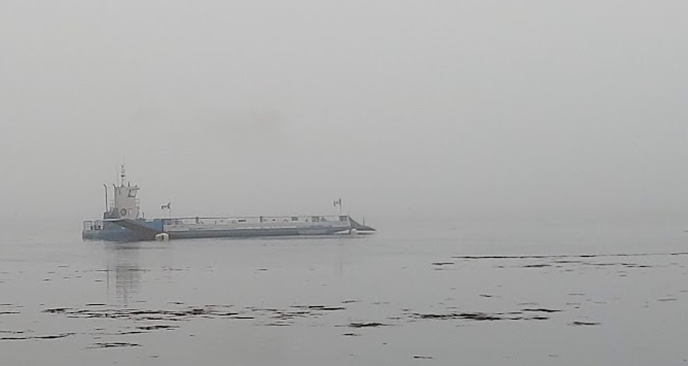
As the holiday season approaches, the news isn’t getting any better for residents of Campobello Island. New Brunswick Transportation Minister Jill Green announced on November 26 that the provincial subsidy to East Coast Ferries Ltd. would come to an end on December 31. Since the arrival of COVID-19 a total of $575,000 has been paid to the private company to fund the extension of its normally seasonal service linking Campobello with Deer Island and the rest of the province. This enabled islanders to access the rest of Canada without travelling through the US via the international bridge to Lubec, Maine.
The ferry currently is scheduled for four days per week, with 1-2 of those days typically being lost to poor weather conditions. The vessel isn’t well suited to winter operation, and no other ferry in the area loses this number of days.
Moreover, crossings to Campobello end at 4:30 pm, limiting the timeframe for technicians or trades to service the island. And, after 4:30 on December 23rd, no crossings are scheduled until December 28th, making holiday travel to Campobello nearly impossible for most people.
Mainland families with children not yet fully vaccinated cannot travel through the Canada-US border without having their children excluded from school, daycare and community settings, forcing mainland families into an impossible situation of spending a second COVID Christmas separated from family on the island.
Meanwhile, the Human Development Council reports that childhood poverty on Campobello in 2021 has risen 9% to nearly 43%, giving the island the dubious distinction of having the highest level of childhood poverty outside of First Nations communities.
In an interview with Brunswick News, Minister Green appeared to soften her opposition to the ferry ever so slightly. “We’re not considering it at the moment,” she said, but I’m open to listen.” She acknowledged that there had been discussions with colleagues in the federal government on the issue.
An ACOA-sponsored 2019 feasibility study estimated it would cost government(s) nearly $2 million a year to fund a year-round ferry. However, the consultant also estimated the annual spinoff benefit to the New Brunswick business community at over $3 million – revenue that is currently going to the US.
UPDATE: On Dec. 16, news broke that the ferry service will be extended until May 31, 2022, in light of increasing COVID case counts, especially in Maine. For more details: https://www.cbc.ca/news/canada/new-brunswick/campobello-island-ferry-extension-1.6288344
-with files from Justin Tinker
MARITIME BUS ENTERS YEAR 10, SETTING A NEW RECORD FOR PUBLIC TRANSIT ON PROVINCIAL HIGHWAYS
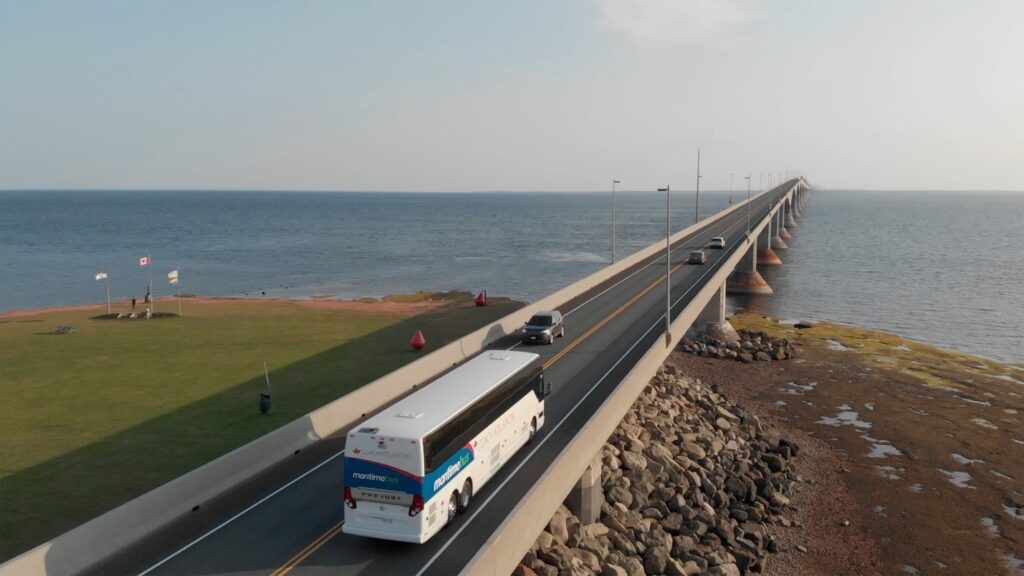
On December 1, 2012, Maritime Bus picked up the pieces left behind by the multi-national owner of Acadian Lines, launching uninterrupted service extending from Sydney NS to Rivière-du-Loup QC. Since then the locally-owned Charlottetown-based company has served all three Maritime provinces – operating daily schedules until the hammer-blow of COVID-19 struck. Through the worst of the pandemic, the company continued to run its buses, albeit on a reduced four-days-per-week basis. Now they’ve been back to daily except Saturday for nearly six months, with extra runs on Fridays and Sundays to accommodate weekend travel.
As the company enters its tenth year in business, it is passing a significant milestone. No other motorcoach operator has provided continuous service in all three provinces for longer than nine years. And, despite losing millions of dollars in gross revenue because of the pandemic, the founder says Maritime Bus is here to stay. Mike Cassidy told Brunswick News that the number of employees is down to 175 from the pre-pandemic peak of 515, directly attributable to the loss of charter, tour and cruise ship business. But he’s confident his business will bounce back once the travel industry recovers from the crisis.
“We’ve come too far; there is no giving up,” he told Daily Gleaner reporter Michael Staples. “I don’t have a give-me-up bone in my body.”
Despite some financial assistance from the three provincial governments, supported in part by Ottawa’s “Safe Restart” program, Maritime Bus still had to borrow $6 million to cover the financial impact of COVID-19.
For the time being, there are no plans to resume Saturday operation, but Mr. Cassidy says he’s sent a clear message to governments and politicians that the company is here to stay. He’s still actively advocating for a regional transportation plan – one that would connect communities without air or rail options – and he continues to urge the Government of Canada to assume a leadership role that would ensure coast-to-coast motorcoach service for people and packages.
HAPPY HOLIDAYS! YEAR END DONATION REMINDER
As we approach the holidays and the end of 2021, all of us at TAA would like to wish our readers and supporters a safe and happy holiday season, and a wonderful start to the new year ahead!
Our advocacy is supported entirely by the generous support of our members and donors, and we’d like to take this time to thank you all once again. If you aren’t yet a member, it’s always a good time to consider joining! https://transportactionatlantic.ca/membership/
In addition to membership, tax-deductible donations in support of our advocacy efforts are gratefully received online through Canada Helps. Don’t forget, December 31 is the deadline to receive a 2021 tax credit for your donation.







